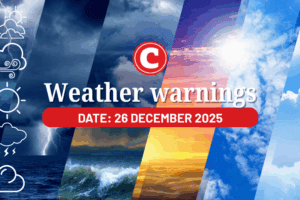Meteorologists say autumn's above-normal temperatures are expected to continue throughout winter in most parts of South Africa.

This winter might very well be one of braaiing in the great outdoors rather than merely huddling around the heater.
So far, our autumn has mostly been a breeze with moderate to warm temperatures, and very little rain.
According to the South African Weather Service’s (SAWS) latest “Seasonal Climate Watch” report, a warm, relatively dry winter is on the cards for most parts of South Africa.
The typical winter rainfall pattern of regions such as the southwest is predicted to be below normal.
“The multi-model rainfall forecast indicates mostly below-normal rainfall over most of the country during Apr-May-June (AMJ), May-Jun-Jul (MJJ) and Jun-Jul-Aug (JJA), except for some parts over KwaZulu-Natal, the Eastern Cape and the Free State for AMJ where above-normal rainfall is expected,” the report states.
ALSO READ: Weather update: Most of SA warm and fine tomorrow
Winter weather likely to be warmer countrywide
Climate scientist Dr Peter Johnston told SABC News that winter temperatures are expected to be above average in certain areas, with minimal rainfall due to the tail-end of the El Niño phenomenon.
While not every day or month of the winter will be warmer, Johnston noted that predictions suggest the cold season will likely be warmer overall.

The good news is that the El Niño phenomenon has weakened since April this year and will continue to do so into June, according to SABC meteorologist Joel Guy Chabata.
Chabata added that, in line with global meteorological consensus, the El Niño weather pattern will continue to impact the weather this winter in South Africa.
Impact of a dry winter on SA dam levels
Overall dam levels in the Western Cape are currently just below 61%, according to the Department of Water and Sanitation.
Dam levels in all of South Africa’s other provinces are currently above 70%, so the Western Cape looks to be especially vulnerable to potential water shortages if the forecast of a drier winter pans out.
The SAWS says that throughout South Africa the forecast “conditions are likely to exacerbate water losses through evapotranspiration and drought, among other factors, resulting in reduced water storage levels”.
El Niño explainer
The El Niño weather system, caused by a warming of surface waters in the eastern Pacific Ocean, has global consequences.
The Daily Maverick reported that 2023 was the warmest on record worldwide, and ocean surface temperatures raced to record highs, consequences of human-induced climate change linked to fossil fuel usage.
The current El Niño event, which started in June 2023, has impacted southern Africa with dry spells, low rainfall, higher temperatures, as well as floods, becoming more intense and prolonged.
NOW READ: The heat is on! Gauteng areas set to top 30°C this week






